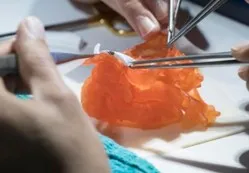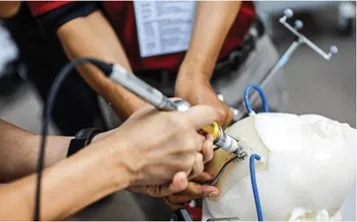Advances in Medical 3D Printing and a Healthier Society

News articles recently published about 3D printing are a lot different from the ones I read between 2010 and 2012. Articles from the beginning of the decade were filled with the promise of industry breakthroughs and predicted 3D printers as a household item. Since then, we’ve seen the technology revolutionize a multitude of industries; but are advances in medical 3D printing meeting the expectations set 20 years ago? The short answer – yes. And it’s more incredible than you could ever imagine.
Imagine being a surgeon and having to purchase expensive cadavers every time you need to practice a unique operation. Also imagine the cadaver body is significantly different than your patient’s body. Not only is this practice costly, but where is the value in practicing if the simulation is different than the real-world situation?
New medical 3D printer from Stratasys
Stratasys recently launched a new medical 3D printer with a focus on digital anatomy. The J750 Digital Anatomy 3D Printer uses a combination of material and software to mimic bone and tissue. With this new technology, doctors can 3D print a patient’s unique body structure, aneurysm, and bones from CT scan data and create an exact replica.
Stratasys J750 Digital Anatomy 3D Printer | GoEngineer
Mimicking bone and tissue is incredible, but what if we could print actual bone and tissue? I recently attended a 3D printing conference and learned that this possibility may not be that far out of reach.
University of Utah develops method to 3D print cells
This 2018 article shares how Robert Bowles, a researcher at the University of Utah, and his team are paving the way to ‘printable’ human organs by working toward the ability to replace damaged tendons, ligaments, or spinal disc ruptures with 3D printed ones.
This could be the infancy of technology that would catapult us to a future where doctors could print spare parts for our own bodies. (We may finally be able to fix that pesky bulged disk in your dad’s back…eventually.)
Keep your eyes on the medical world because as we’ve seen, medical needs are beginning to be the driving force behind 3D printing innovation in order to create a healthier society. To find out more about what we’re doing with 3D printers visit our website.

About Tate Brown
Tate Brown is a Manufacturing Applications Engineer at GoEngineer. He has worked with Novatek and Schlumberger in a partnership working with their intellectual property team developing and prototyping improved down-hole systems as well as other industry leading technologies. Just prior to joining GoEngineer, Tate worked with Rooftop Anchor helping in the design and testing of suspended access systems used by window washers and service crews on skyscrapers.
Get our wide array of technical resources delivered right to your inbox.
Unsubscribe at any time.
